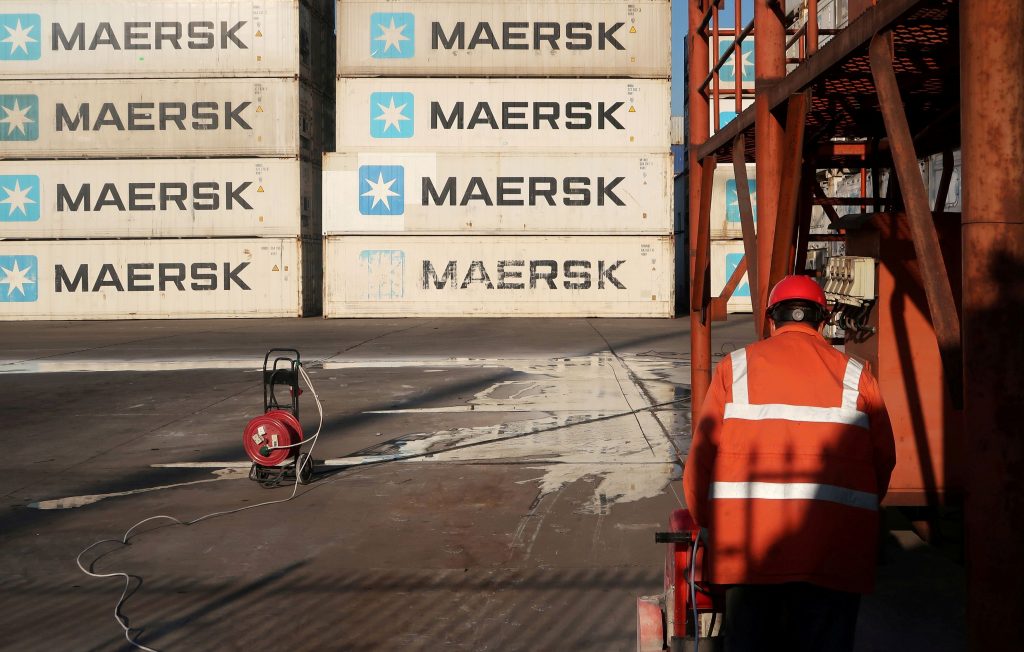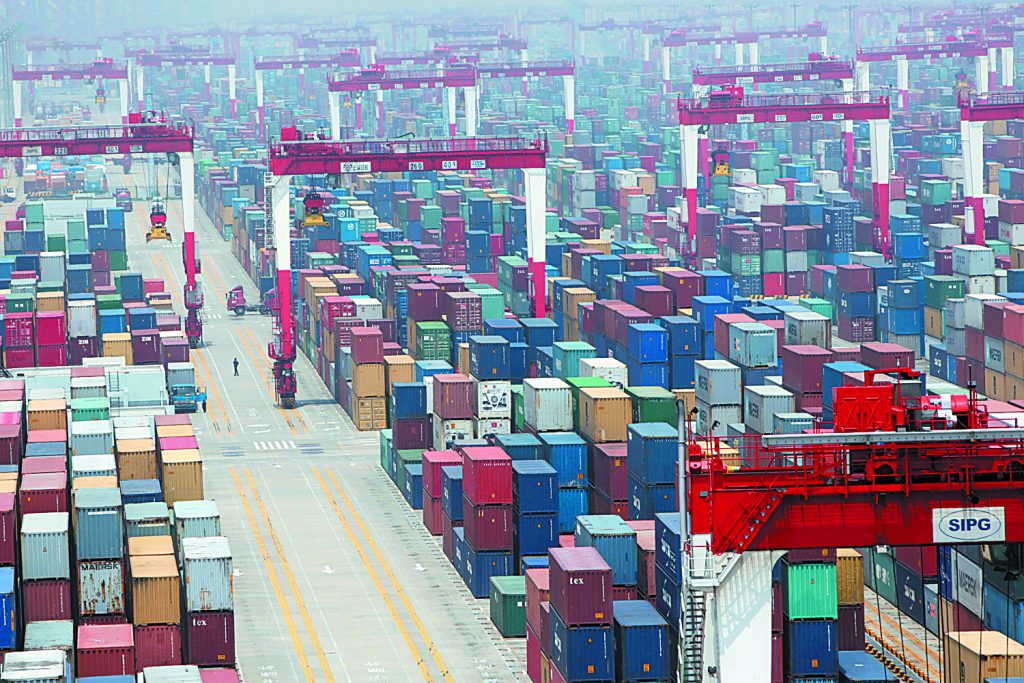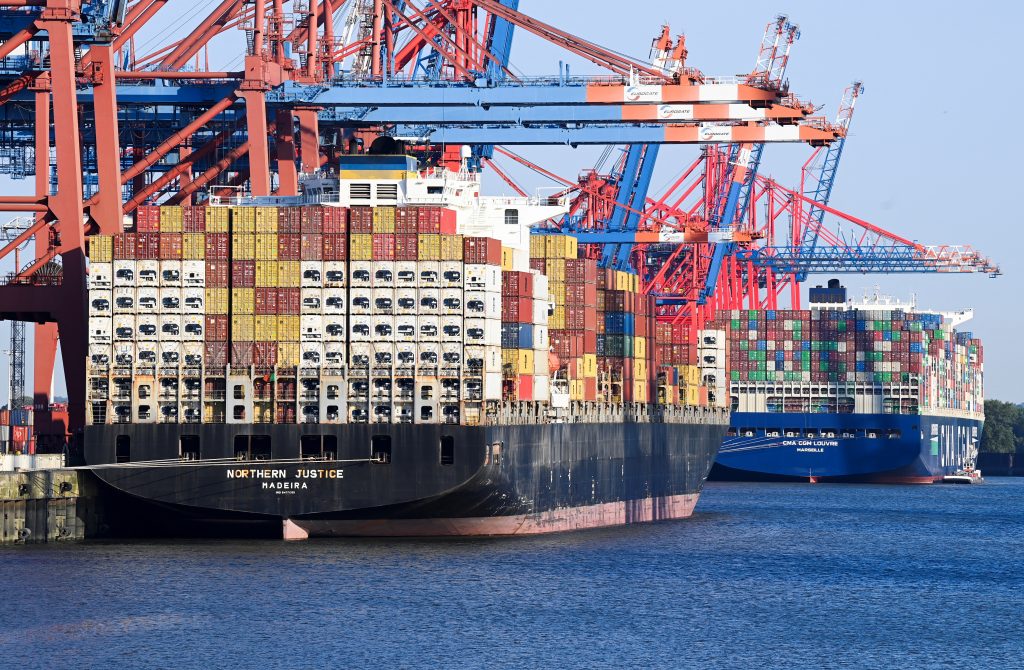Retailers around the world are expected to once again face the brunt of supply chain disruptions – following US and UK “retaliation” for Houthi attacks on merchant ships in the Red Sea.
Already Iran-backed Yemeni rebel groups had set up barriers to access to the Suez Canal. After the attacks by the US-led coalition, combined with the Panama Canal situation and the Chinese New Year, these obstacles have been magnified and now seem simply insurmountable.
Red Sea: How US-UK attack on Houthis burns global trade
Retailers have reported product delays in the past, leading them to plan to use more expensive shipping methods. Late last month, furniture giant Ikea said product deliveries would be delayed and some items would be in short supply. Abercrombie & Fitch, on the other hand, plans to use air instead of sea. 
Every channel counts
To make matters worse, the Panama Canal is experiencing its worst drought in 70 years, affecting the water levels of its main water source, Catun Lake. The long journey could mean retailers miss the window to get spring goods from Chinese factories before they close for the Lunar New Year.
Houthi rebel attacks on shipping in the Red Sea could further disrupt supply chains in 2024. Suez Canal – The Suez Canal – which allows rapid movement of goods to the east coast of America and Europe – is located at the northern end. Red Sea. Major shipping companies such as Maersk and Hapag-Lloyd have advised ships to take the longest route around Africa to avoid attacks.
“Turning ships around the Cape of Good Hope route around South Africa takes longer and is more expensive,” said Patrick Penfield, a professor of supply chain management practice at Syracuse University. The Cape of Good Hope route adds an extra 3,500 miles, or about 10 days, to ships, he said. This added travel time increases costs, including gas and labor, which are ultimately passed on to the consumer.
“Almost everyone is changing course around the Cape of Africa,” Penfield said. He also said that these ships have to be refueled halfway through the long journey. “A lot of these ships are now refueling in South Africa, which is known to have very high fuel costs for ships, almost too much. They don't really have the infrastructure to handle all these extra ships going around the Cape of Africa.”
Cost escalation
The Suez Canal is not the only important sea route facing challenges. Daily traffic through the Panama Canal has dropped from 29 to 25 due to the drought. The Panama Canal and the Suez Canal are two important routes for world trade because they reduce travel times and eliminate the need for ships to navigate more dangerous routes. Daily crossings through the Panama Canal will be reduced to 18 ships in February. For example, under normal conditions up to 36 ships travel through the Panama Canal.
“We've never seen this situation before, and it's shocking, with both canals having problems at the same time,” Penfield said.
There are other ways to quickly replenish retailers' inventory, such as air freight and chartered ships, which are expensive. Still, Abercrombie & Fitch plans to rely on air transport to avoid product supply disruptions — a tactic it used in 2022 when lockdowns in Vietnam disrupted its supply chain operations. Conclusion; In the first quarter of 2022, the company's freight costs increased by $80 million from a year earlier due to increased reliance on air transport. 

Regarding the epidemic
Despite supply chain restrictions, the issue is not as severe as disruption during a pandemic, says Margaret Kidd, program director and associate professor of supply chain technology and logistics at the University of Houston. Contrary to purchasing behavior in the Covid-19 era, people are not spending more on preferred products. Factories are not locked down as they were during the pandemic. However, the problem could intensify if Houthi clashes and attacks continue longer than expected.
“I don't really see it as a long-term viable option,” he said of the increased costs and longer shipping times. “The US-led coalition has a military response to the Houthis, certainly escalating things and leading to a new situation that we have not seen before.”
Which products are affected?
The saving grace for most is that the holiday shopping season is over. Robert Kaufman, managing director of consulting firm Parker Avery Group, pointed to Modern Retail, however, as the retailer's spring and summer range is “in the eye” of new turbulence. likely to be affected.
Retailers around the world are stocking up on products ahead of the Lunar New Year holiday in China and are looking to air or rail alternatives for shipping across the Red Sea in an effort to avoid empty shelves this spring, executives and experts said.
Asia-Europe trade is highly exposed to Suez disruptions – already deliveries through China's Sheen are in the “red”, with tragically long delays already reaching 20 days – while up to 30% of US traffic through the canal is exported to the East Coast.
Already on January 5, when Danish logistics company Maersk announced it would divert its ships from the Red Sea “for the foreseeable future” after an attack on one of its ships, big names were among the watchdogs. Fashion retailers include H&M Group, Levi's Strauss & Co and Nike. 

A race against time
According to Modern Retail, retailers are also in a race against time: On Feb. 10, factories in China will close for two weeks to a month for the Lunar New Year holiday, when companies typically try to export as much as possible.
But as ships are diverted, fewer ships will return to China to load cargo ahead of the holiday. That means potential delays for products hitting Western shelves in April or May. Logistics experts have already complained of a shortage of containers at China's Ningbo port.
“The worst thing that can happen to a retailer is to have a significant backlog of product that they can't bring to market due to seasonality,” said Rob Shaw, general manager of EMEA at inventory software company Fluent Commerce.
Europe's Aldi Nord said it may receive items such as homeware, toys and decor later than planned, so it is postponing the promotion of some products.
Craig Poole, chief executive of Cardinal Global Logistics in the UK, said its utility costs had risen from around $7,000 in November to around $9,000-10,500 per 40ft container and were rising daily.
IC Trade, which exports mechanical components from China to Italy, is exploring the option of rail transport, but as founder Marco Castelli points out “it's not easy to find space”. “To replace one ship, you need 100 trains.”
Polish fashion retailer LPP told Reuters it was considering rail or plane alternatives for its “urgent” collections.
Continued disruption could hit European retailers' gross margins, RBC analysts said, while the prospect of new supply chain pressures pushing up prices has raised fears of a new global inflationary crisis.
For some companies, the recent disruptions highlight the need to permanently shift supply chains so factories are closer to end consumers, a practice often called “near-shoring.”
Fashion retailers and suppliers have told Drapers that these additional costs can increase shipping costs by up to 20% and up to 400%!